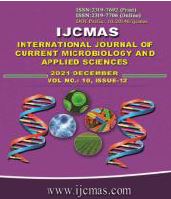


 National Academy of Agricultural Sciences (NAAS)
National Academy of Agricultural Sciences (NAAS)

|
PRINT ISSN : 2319-7692
Online ISSN : 2319-7706 Issues : 12 per year Publisher : Excellent Publishers Email : editorijcmas@gmail.com / submit@ijcmas.com Editor-in-chief: Dr.M.Prakash Index Copernicus ICV 2018: 95.39 NAAS RATING 2020: 5.38 |
Watershed is a region (or area) delineated with a well-defined topographic boundary and outlets. It is a region within which hydrological conditions are such that water becomes concentrated within a particular location. The morphometric characteristics at the watershed scale may contain important information regarding its formation and development because all hydrologic and geomorphic processes occur within the watershed (Singh, 1992). The quantitative analysis of morphometric parameters is found to be of immense utility in river basin evaluation, watershed prioritization for soil and water conservation and natural resources management at watershed level. DEMs can be used to derive flow networks and then automatically generate watershed boundaries for given outlet points using GIS technology. Morphometric analysis of the watershed is characterized by dendritic type drainage basin which indicates the homogeneity in texture and lack of structural control VNMKV- Pingali watershed has order up to 5th order. From first (272.97) to fifth order (0.22) stream, stream length decreases hence gradient is increased from flat to steep as the stream order increases. The mean stream length ratio varies between 0.13 to 0.25. The increase in stream length ratio from lower to higher order shows that the study area has reached a mature geographic stage. The drainage density of the watershed is 1.88 Km/Km2. A low drainage density indicates permeable subsurface strata and is a characteristic feature of coarse drainage which generally shows values less than 5.0. A low value of the drainage density indicates a relatively low density of streams and thus a slow stream response (Singh, 2004). The Ruggedness number for the basin is 1.46. This number represents that if drainage density is increased, keeping relief as constant then average horizontal distance from drainage divide to the adjacent channel is reduced.
 |
 |
 |
 |
 |